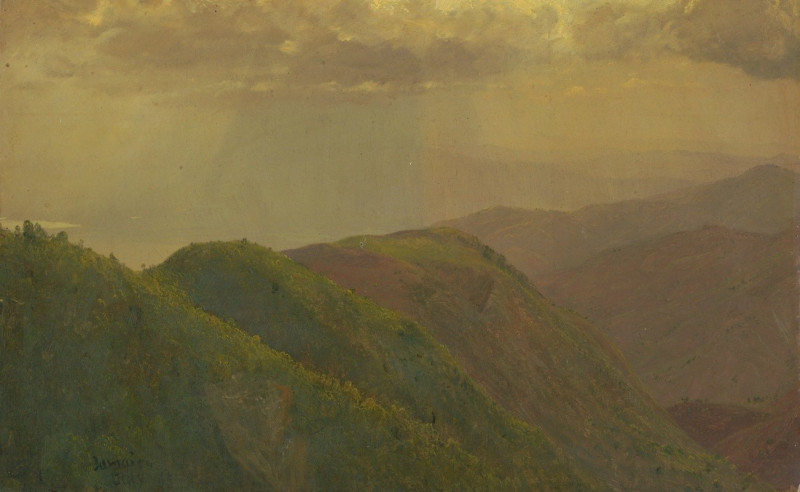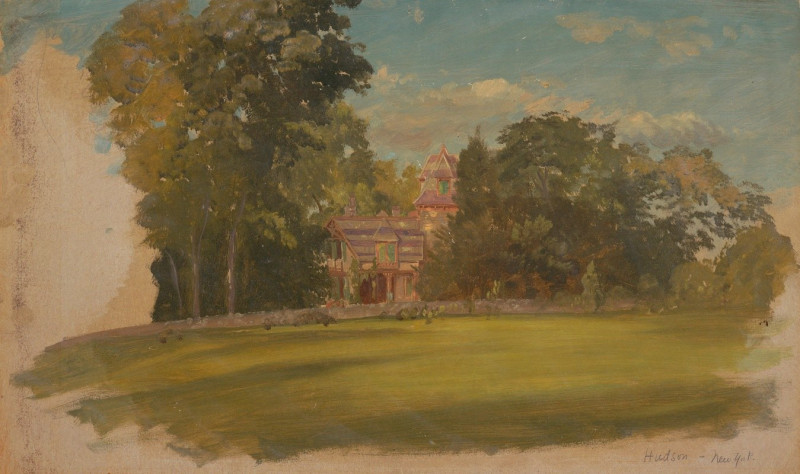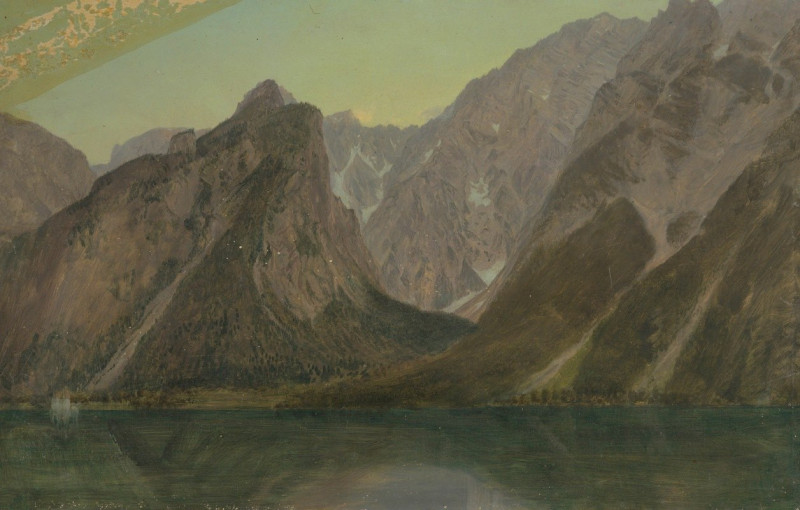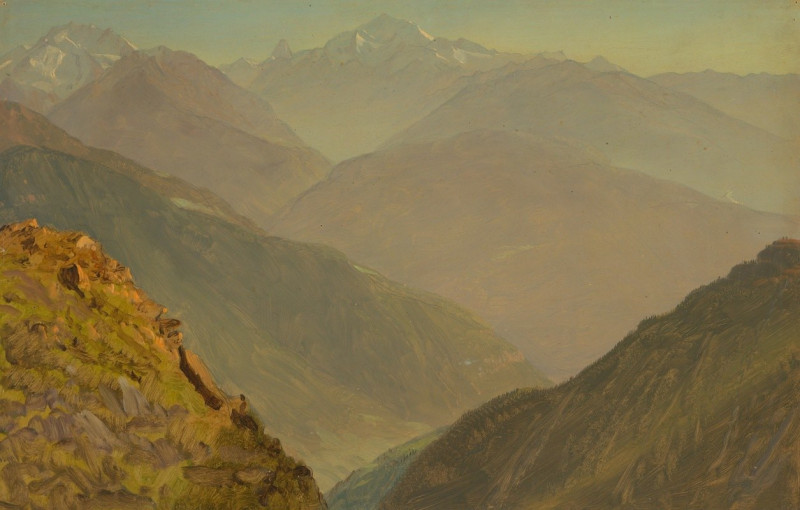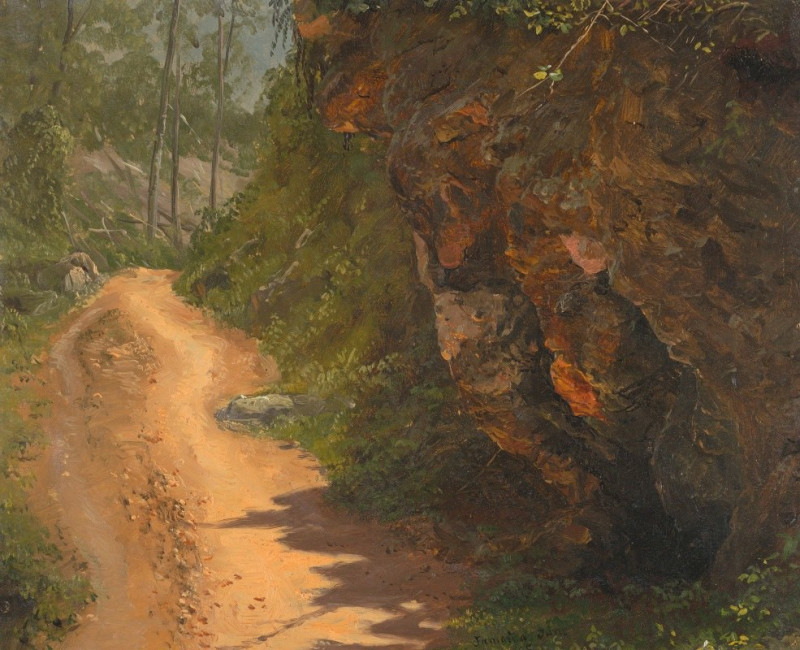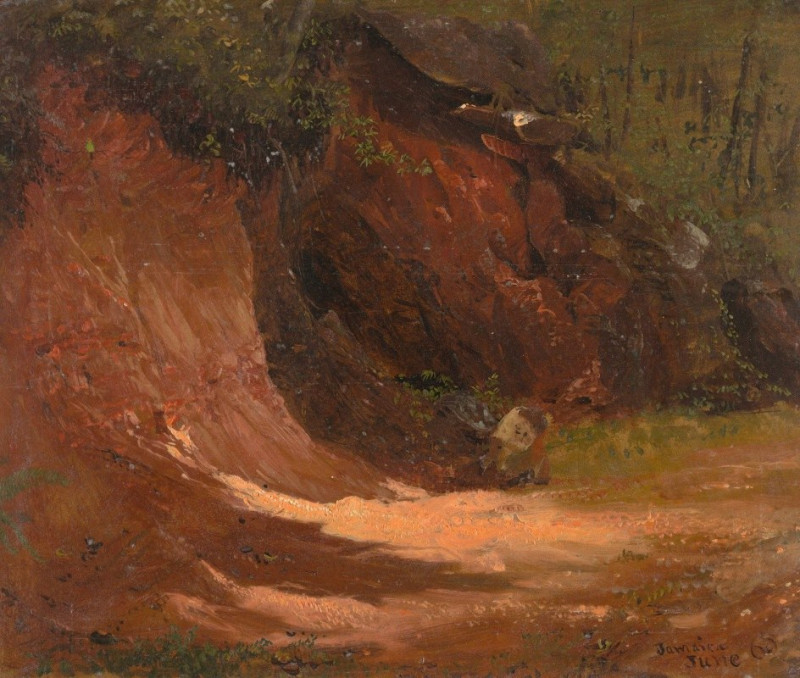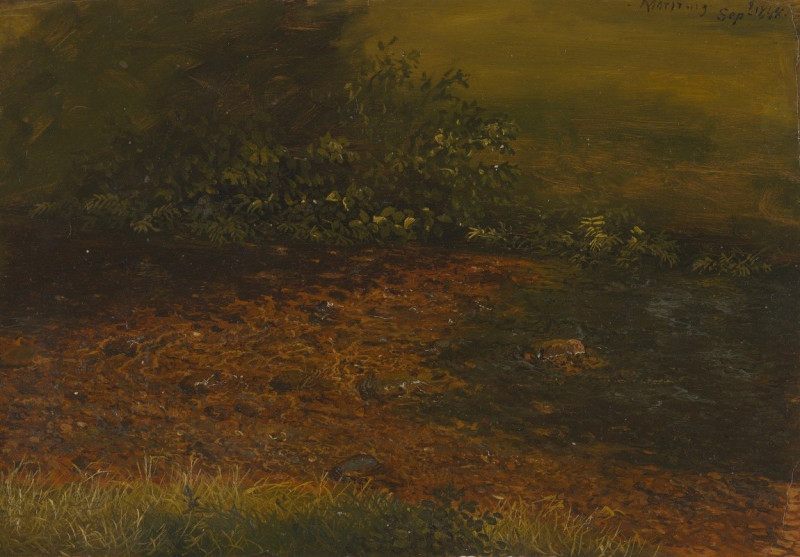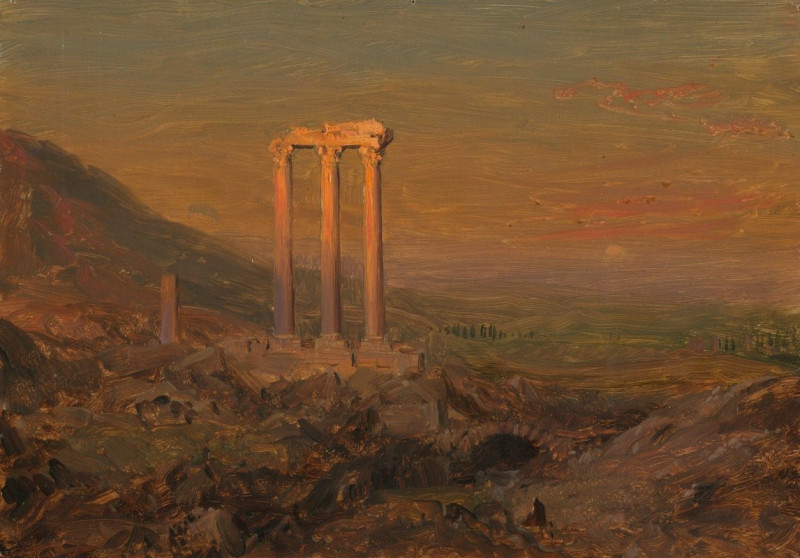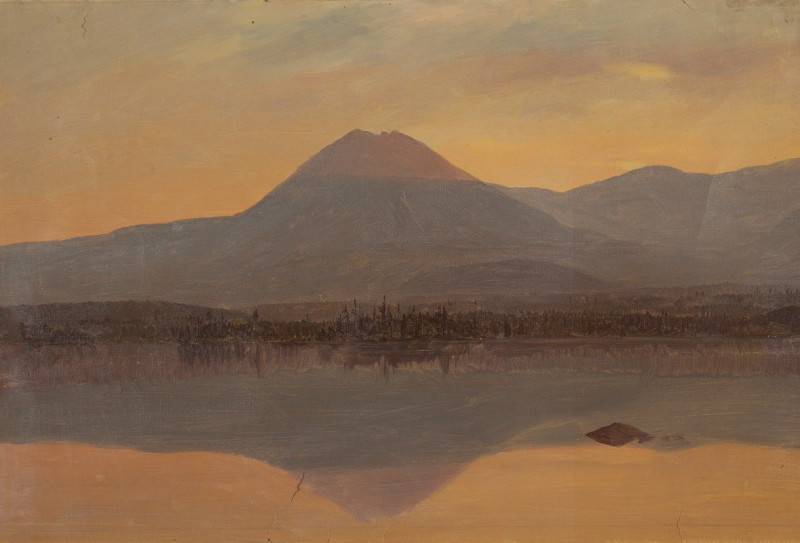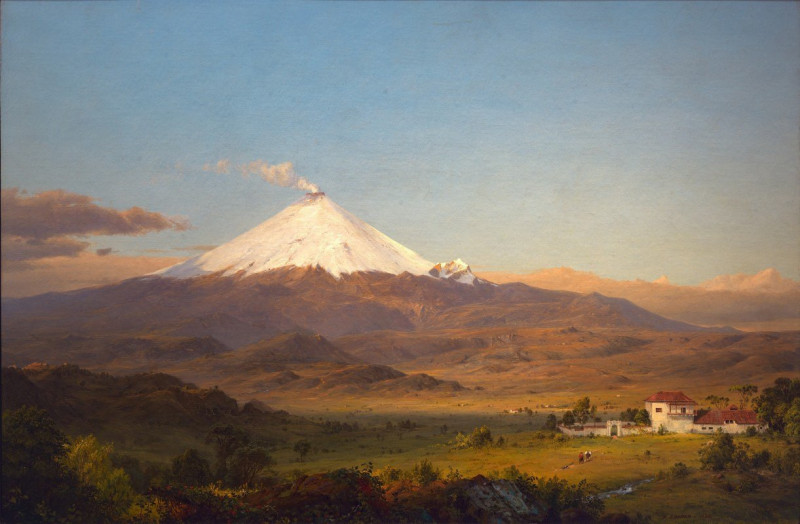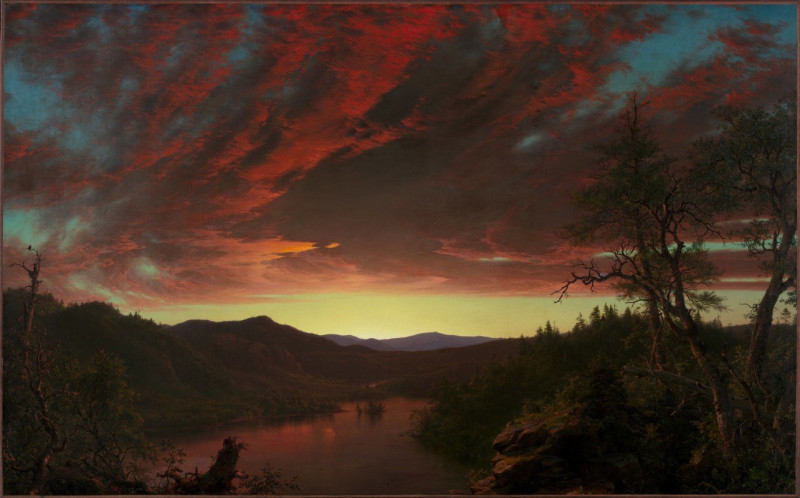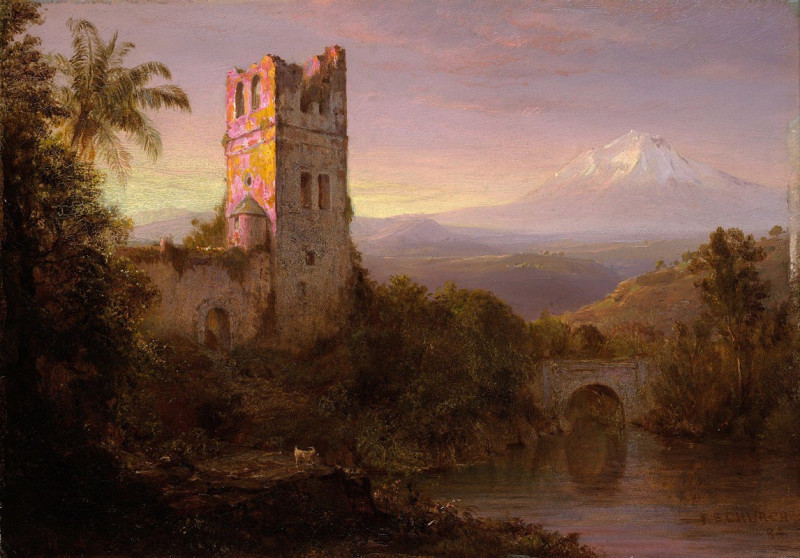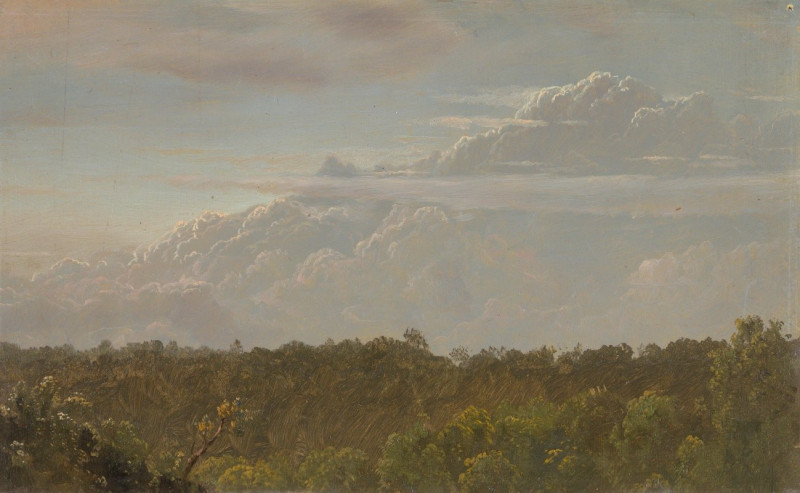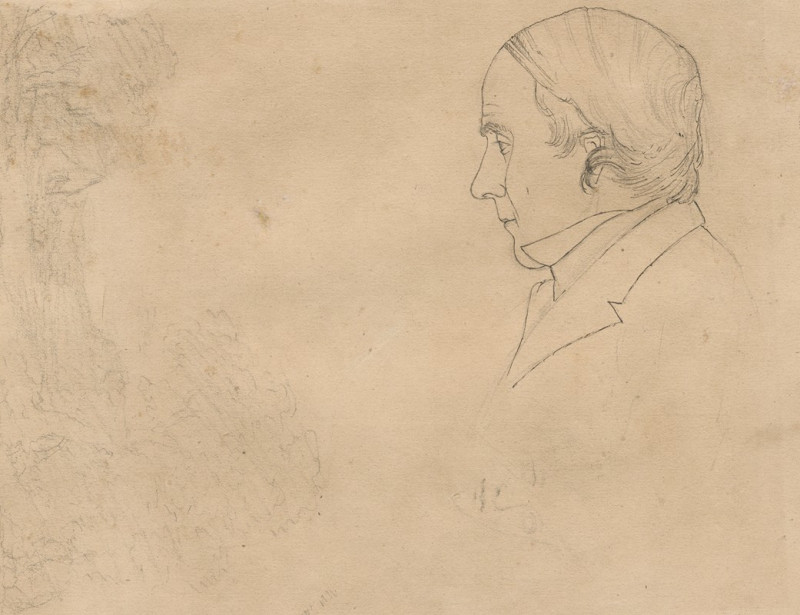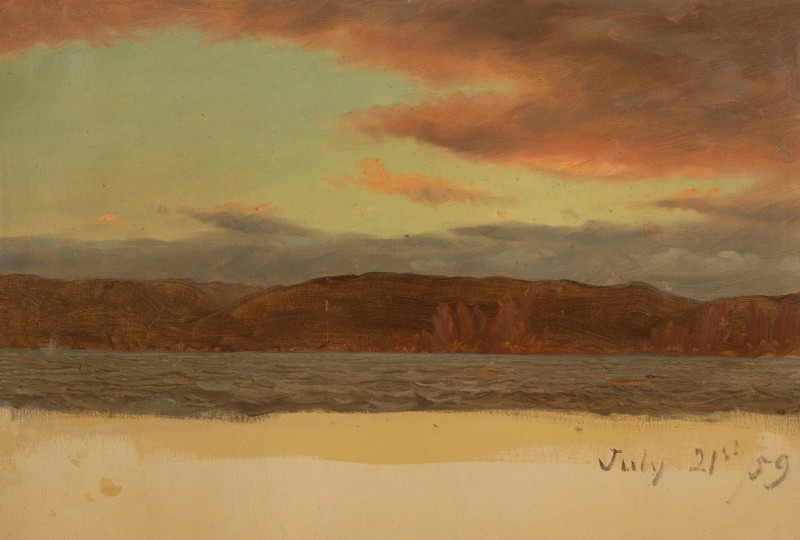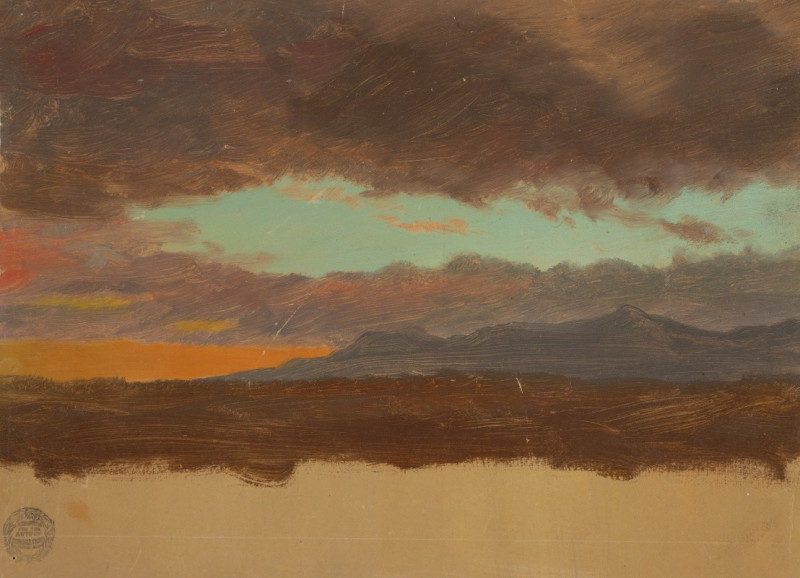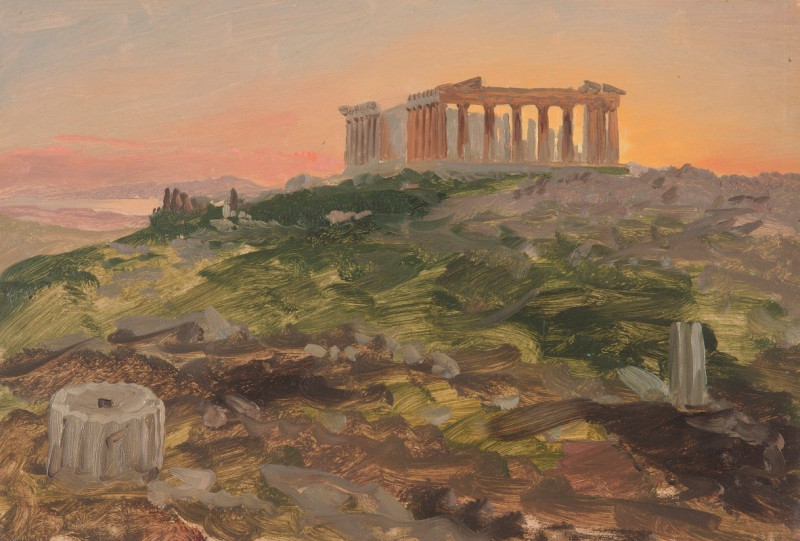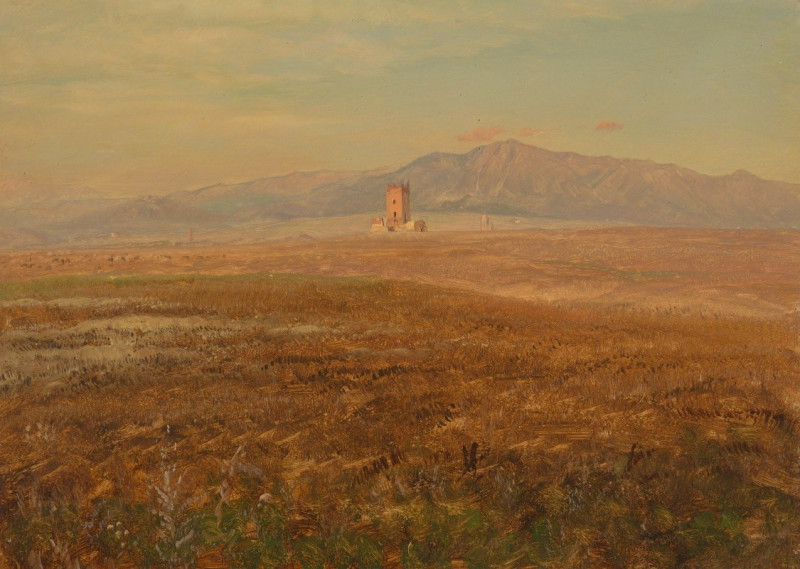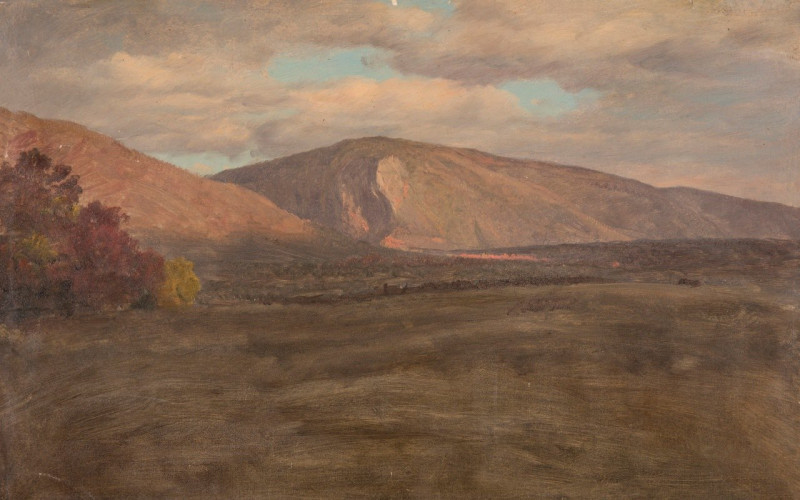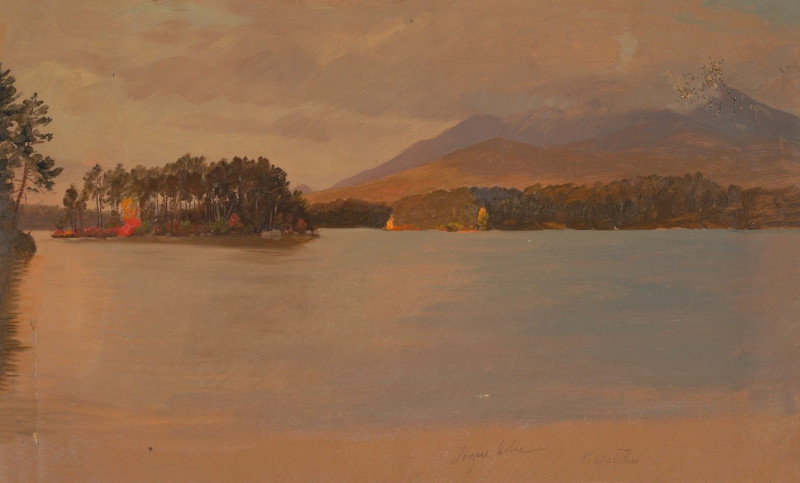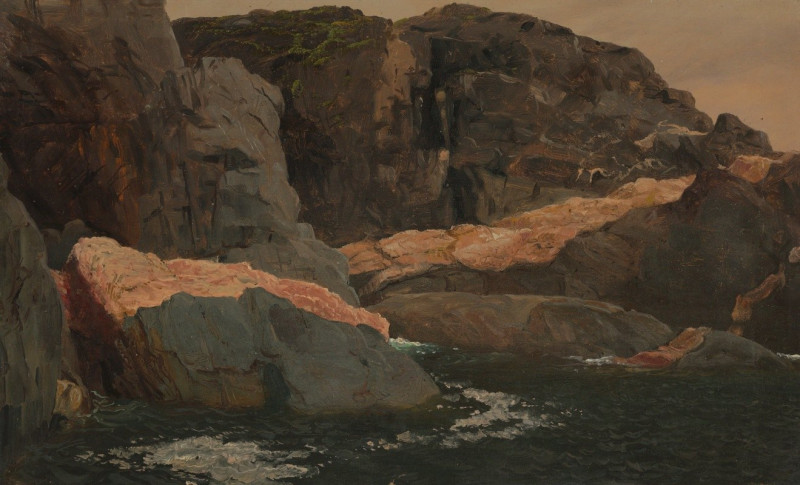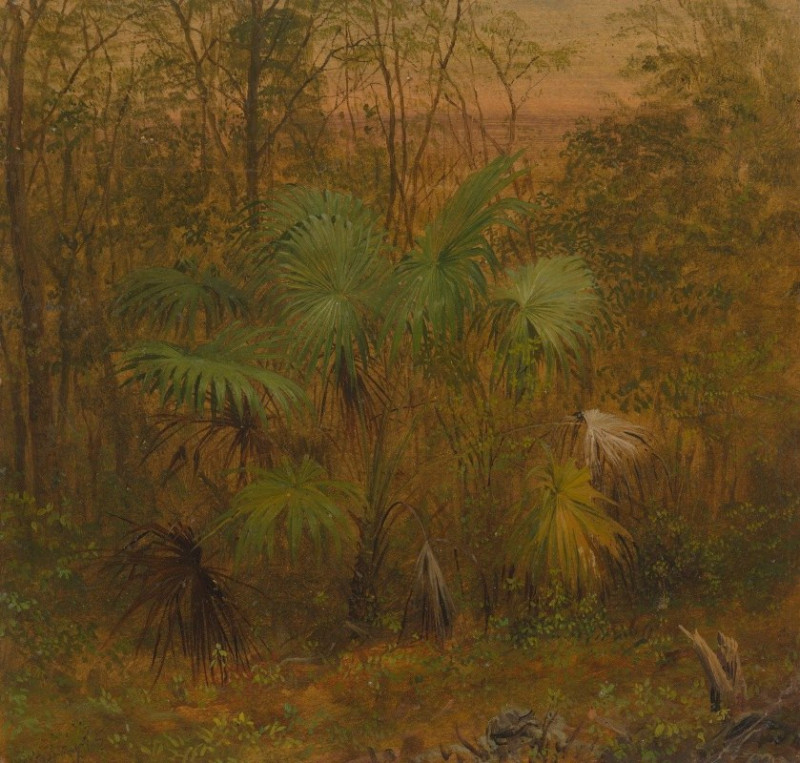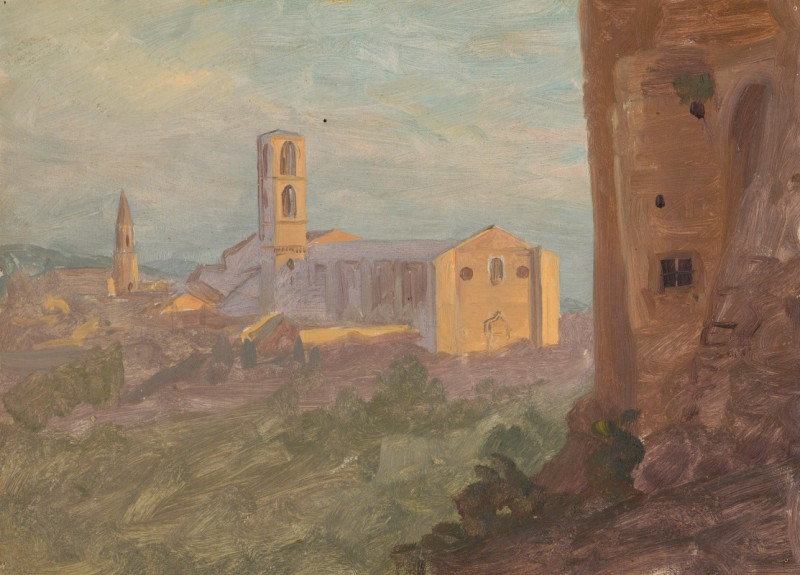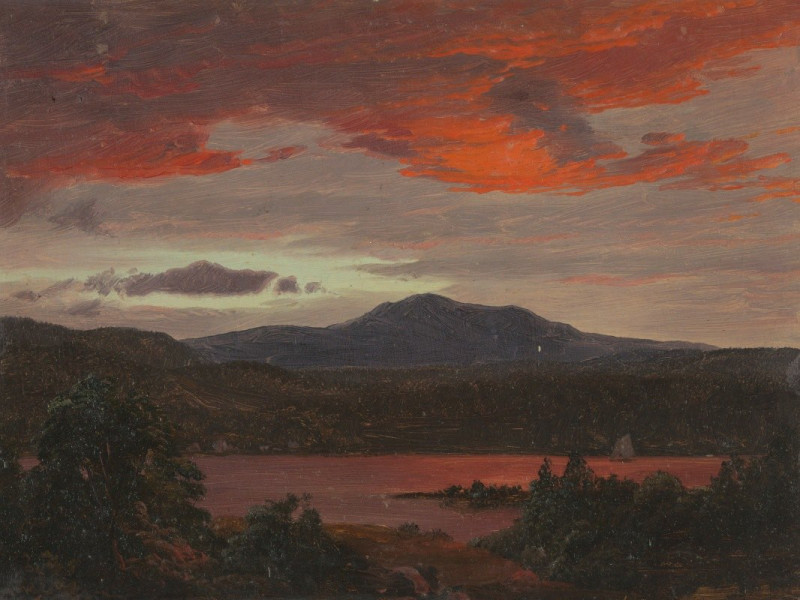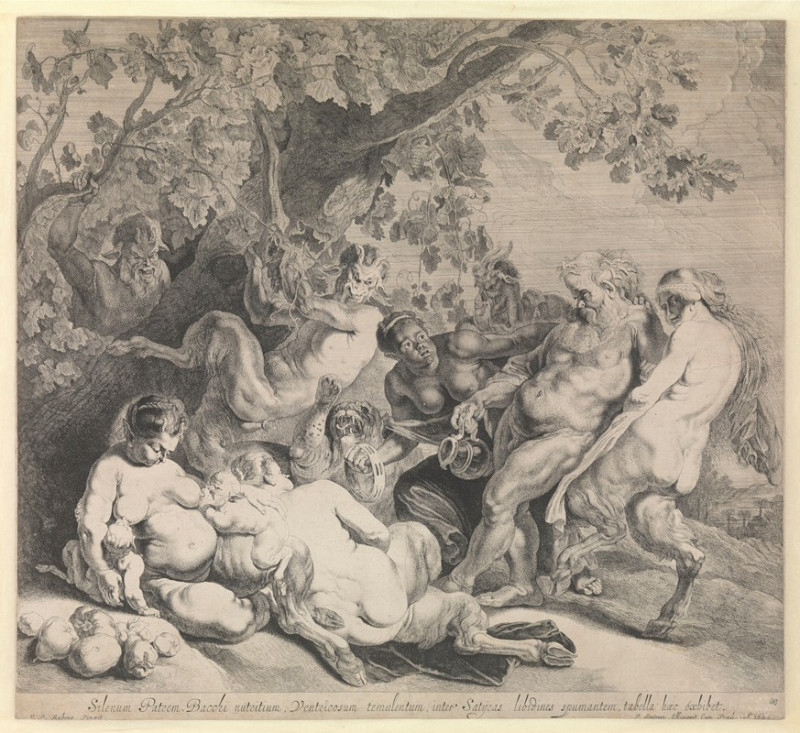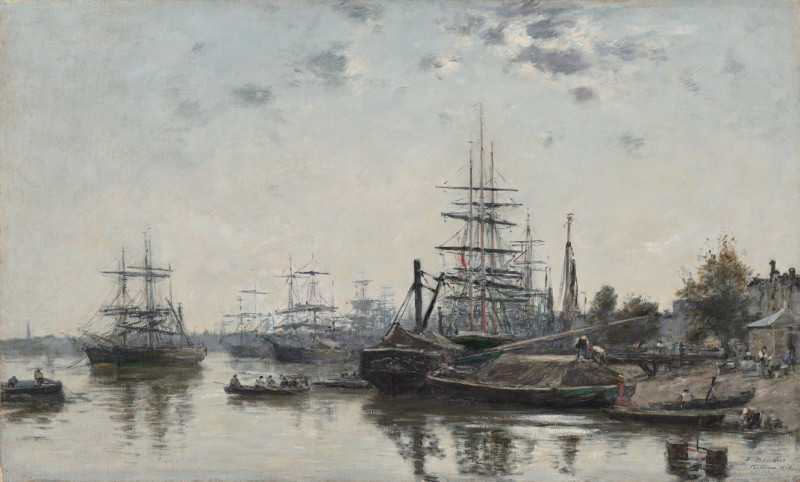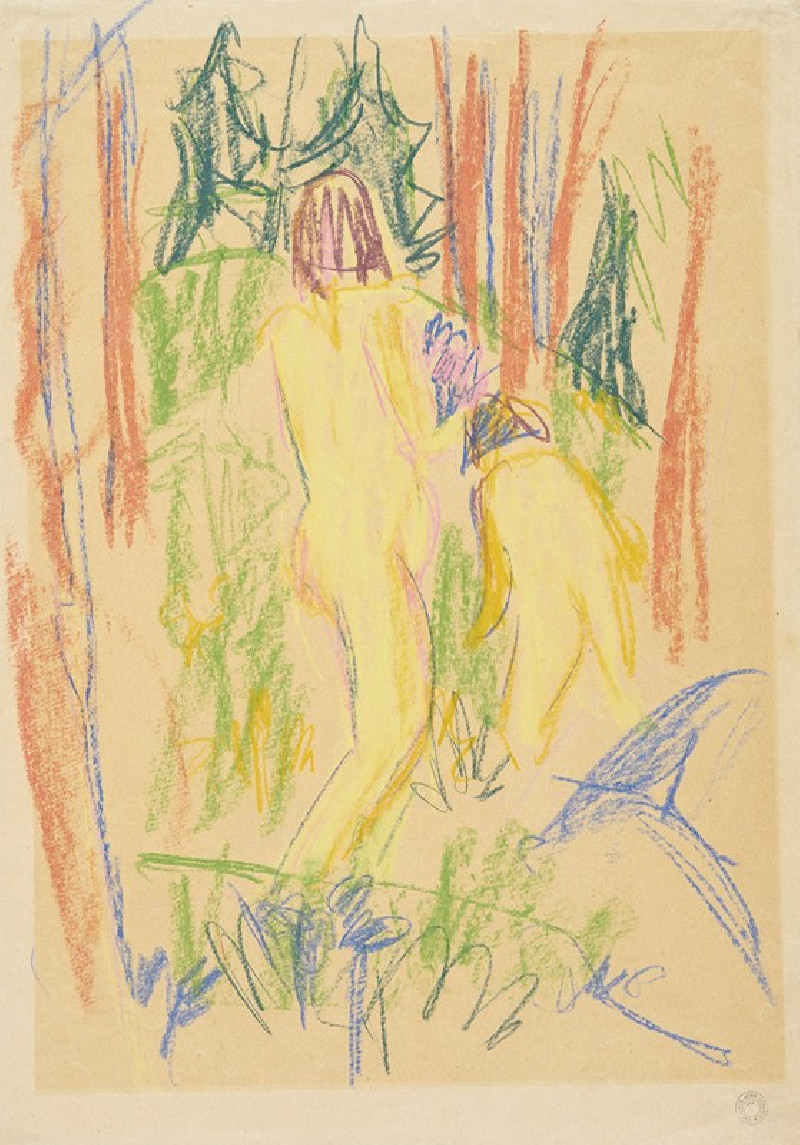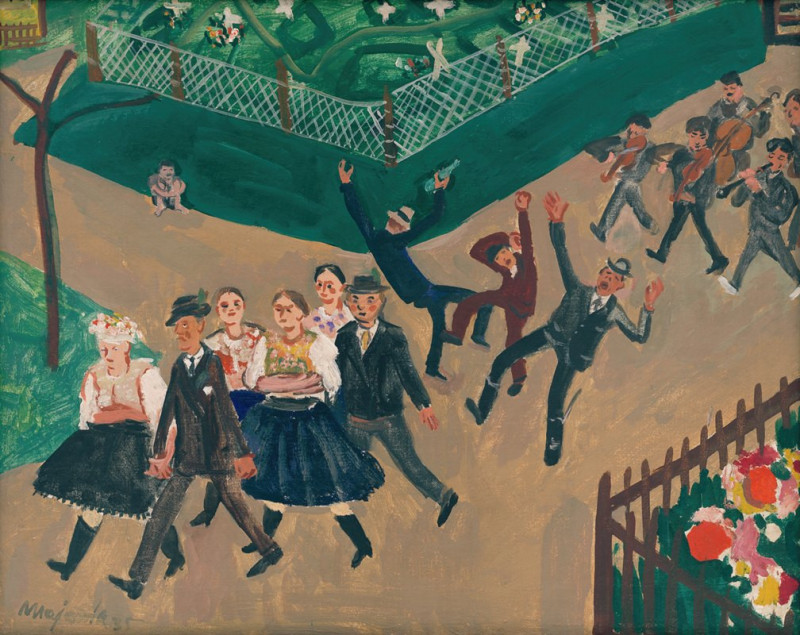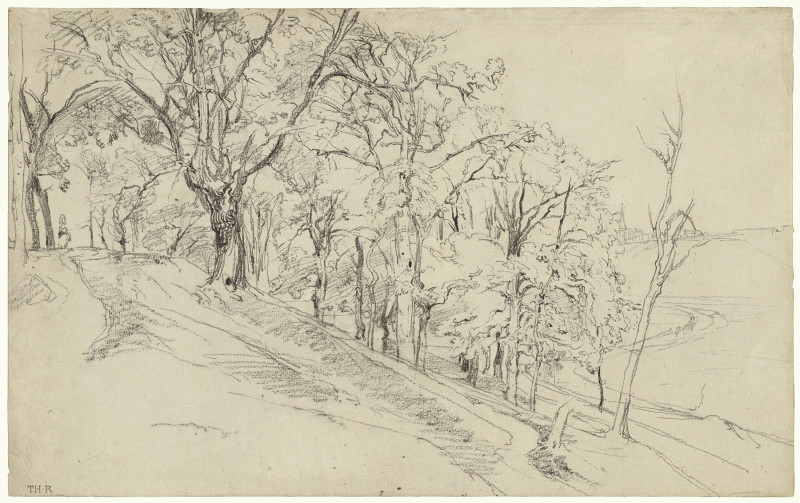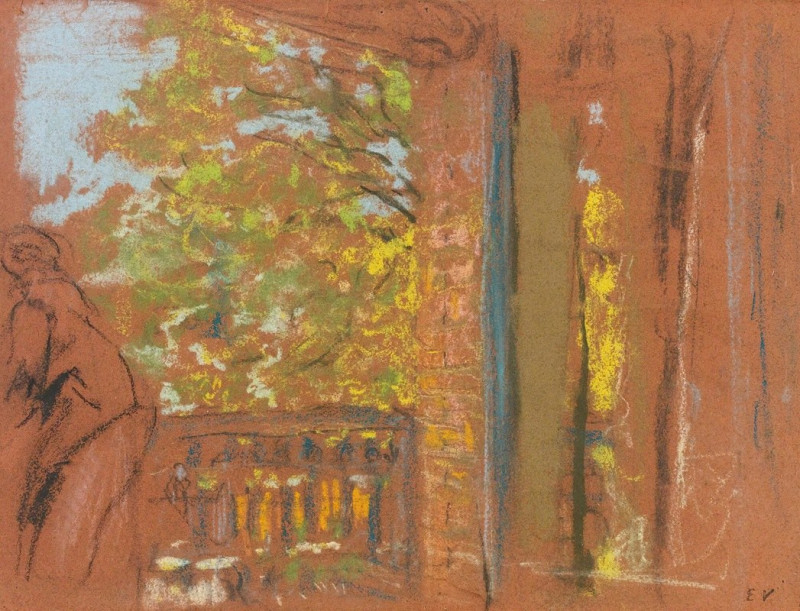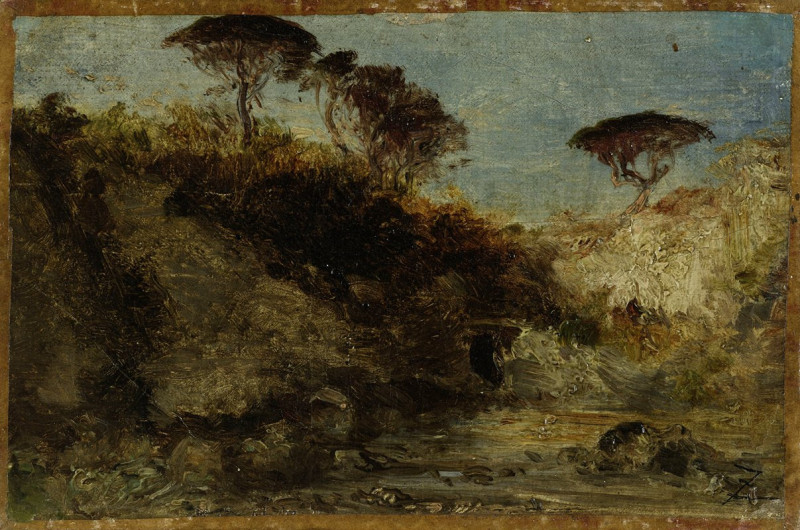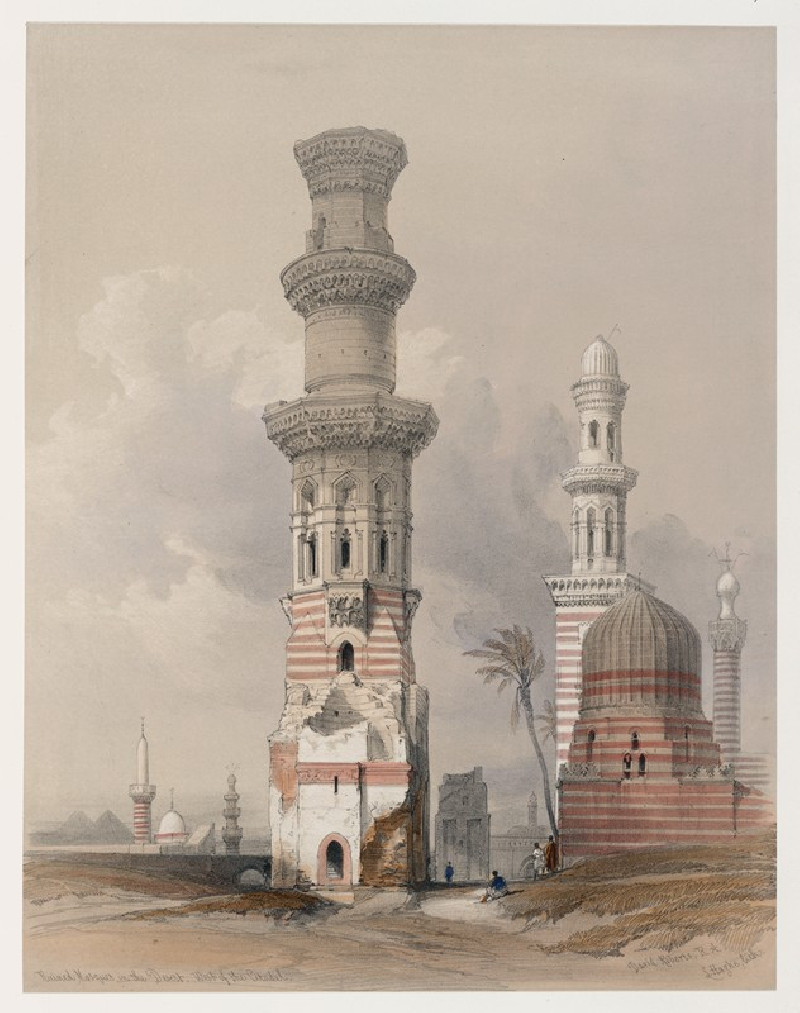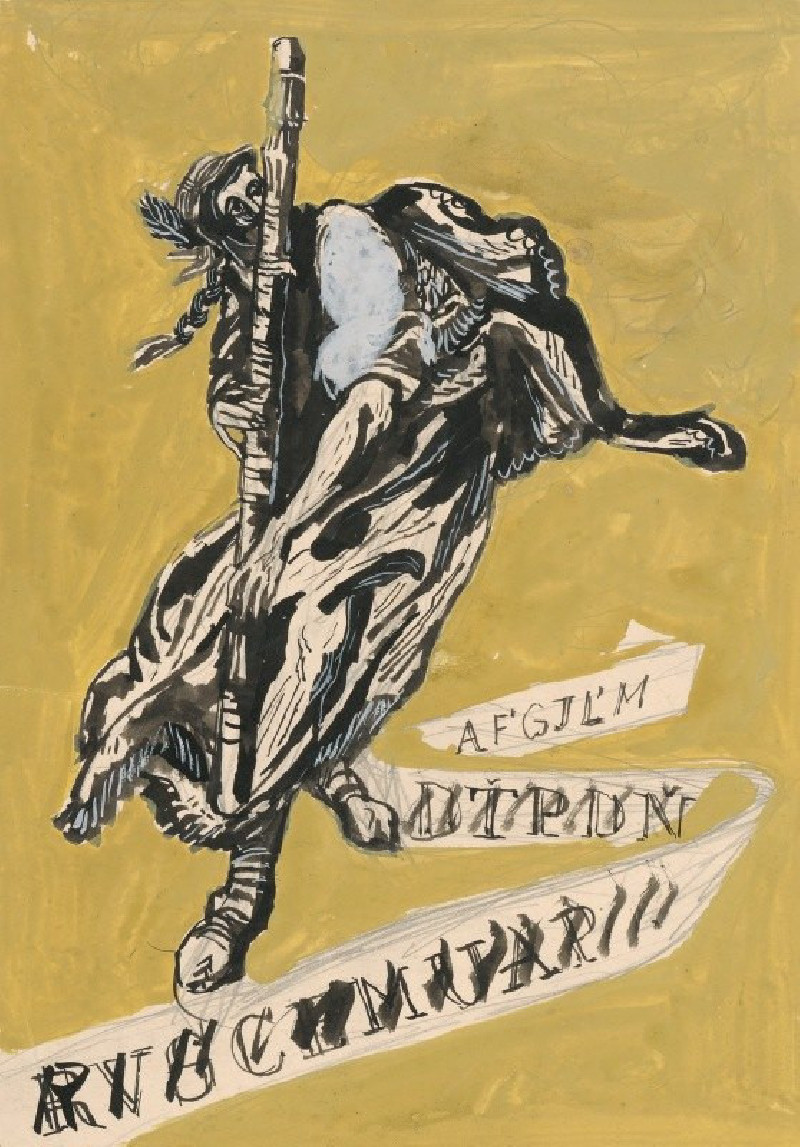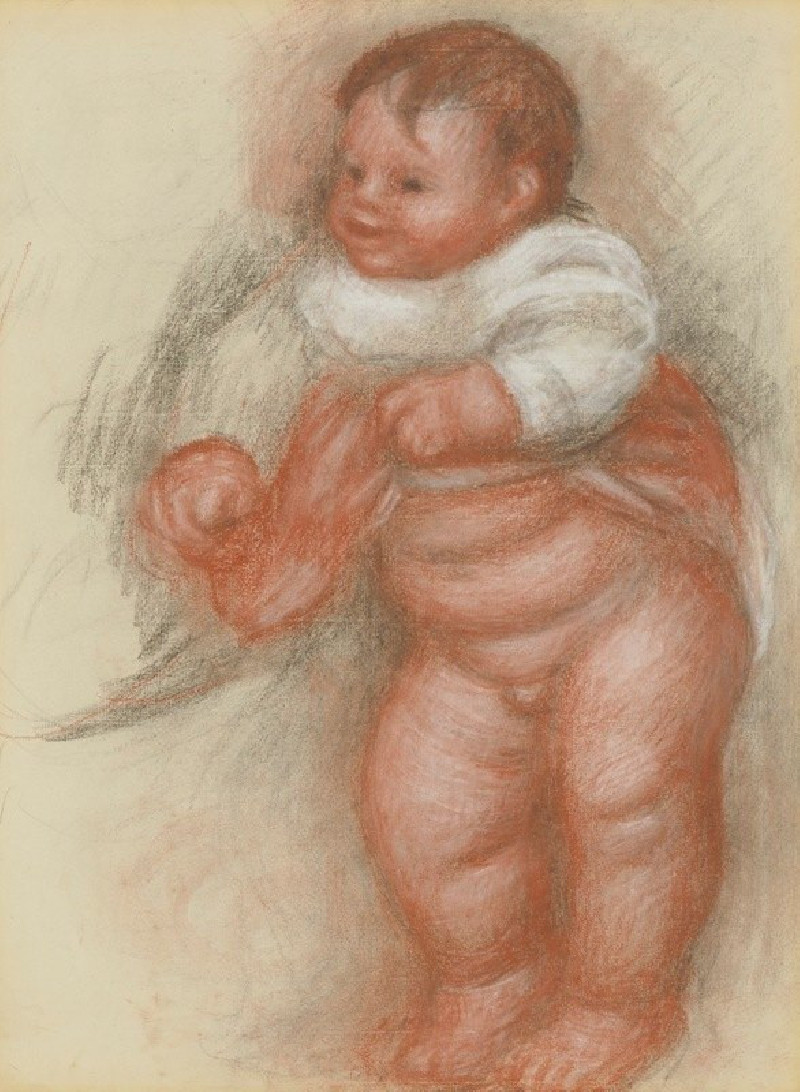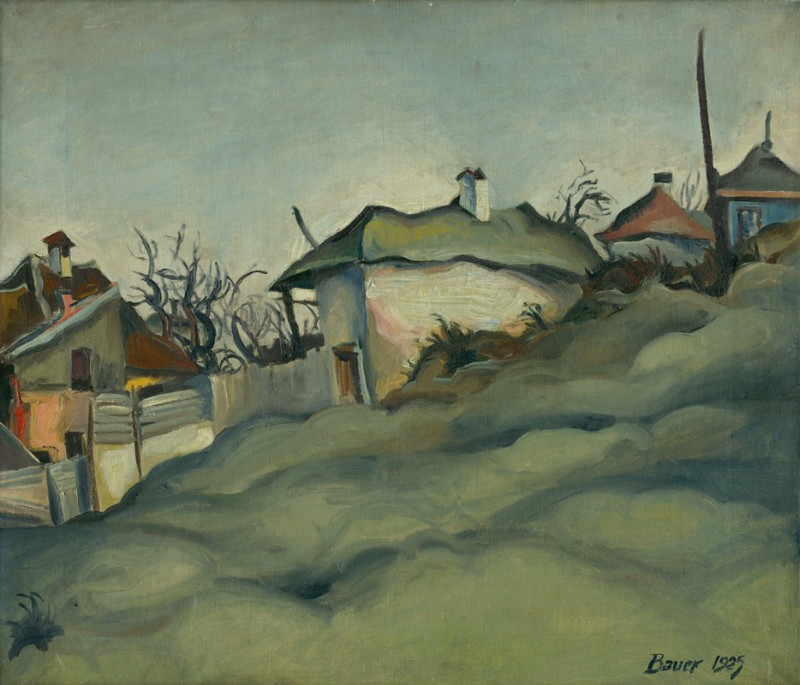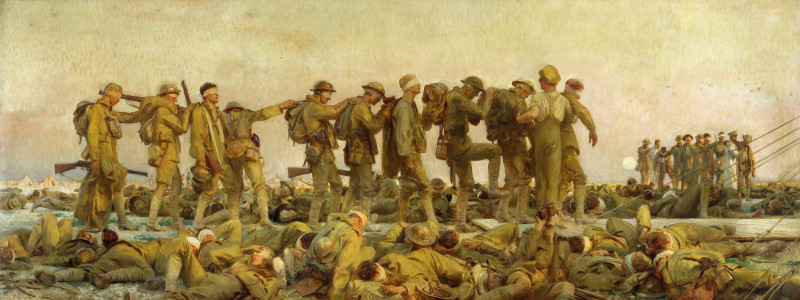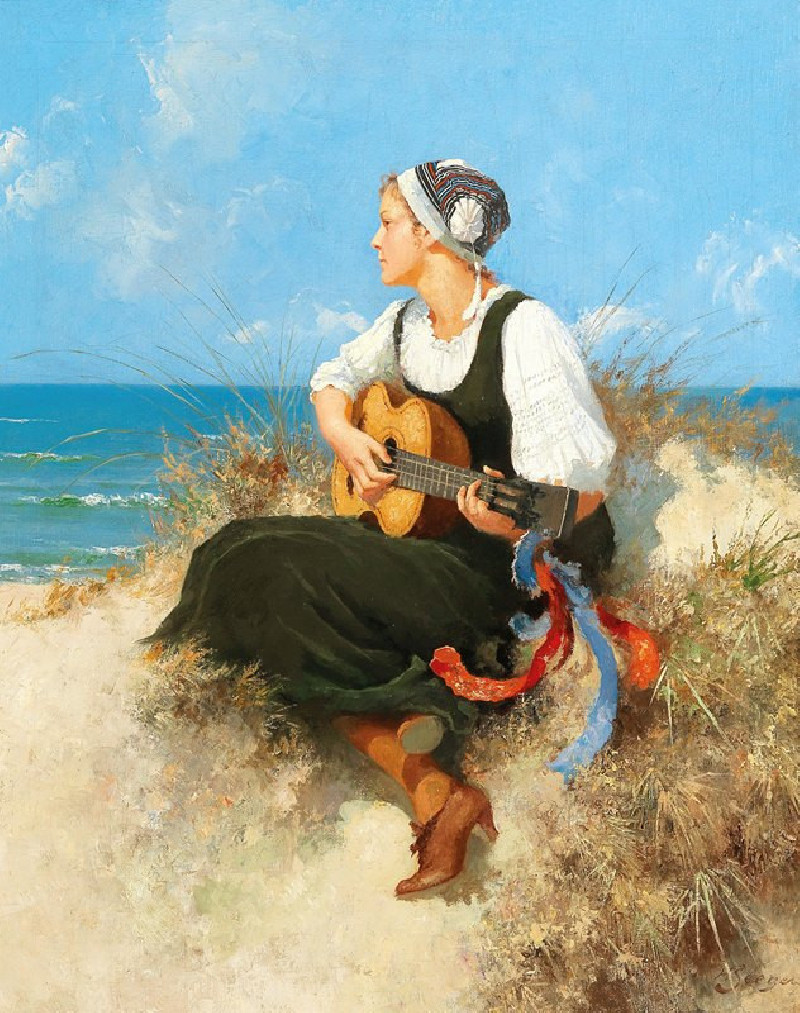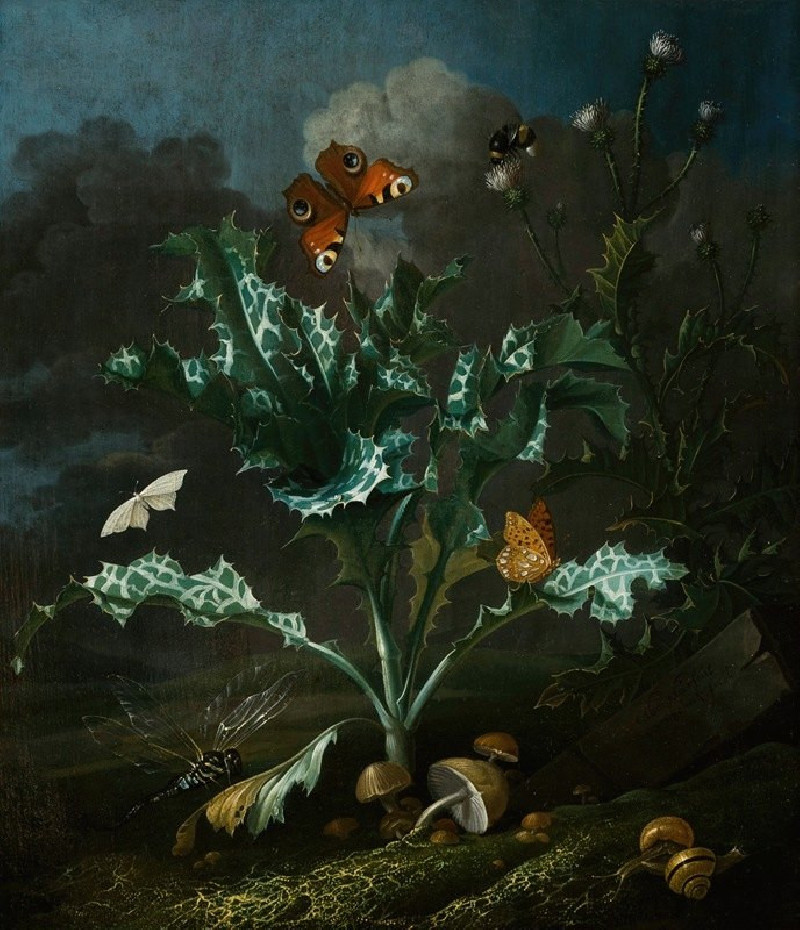Landscape in Jamaica, West Indies (1865)
Technique: Giclée quality print
Recommended by our customers
More about this artwork
Artist: Frederic Edwin Church"Landscape in Jamaica, West Indies (1865)" by Frederic Edwin Church invites us into a breathtaking terrain of lush highlands unveiling the natural grandeur of Jamaica during the mid-19th century. In this enigmatic oil painting, Church captures the serene yet dramatic atmosphere of the West Indies with a masterful interplay of light and shadow that speaks to his reputation as a central figure in the Hudson River School.This panorama details rolling hills and verdant valleys under a moody sky, where the lingering light hints at the fading day. The painter’s characteristic attention to detail and his skill in conveying vast natural spaces are evident. Interestingly, the painting combines a realist capture of nature with a romantic sensibility, presenting the exotic landscape as both foreboding and inviting.The vista overlooks distant mountains that fade into the haze, suggesting the vastness of the unexplored territories. The different hues of green, juxtaposed with earthy browns and the subdued ochre of the hills, create a tapestry of color that is both rich and subtle. Meanwhile, the sky, a turbulent mass of clouds glowing with gold and gray, suffuses the landscape with an ethereal light, giving the scene a divine quality typical of Church's works.This piece not only showcases the unique topography and vegetation of Jamaica but also reflects the era's broader fascination with the natural world and exploration.
Delivery
Returns
Frederic Edwin Church (May 4, 1826 – April 7, 1900) was an American landscape painter born in Hartford, Connecticut. He was a central figure in the Hudson River School of American landscape painters, best known for painting large landscapes, often depicting mountains, waterfalls, and sunsets. Church's paintings put an emphasis on realistic detail, dramatic light, and panoramic views. He debuted some of his major works in single-painting exhibitions to a paying and often enthralled audience in New York City. In his prime, he was one of the most famous painters in the United States.

